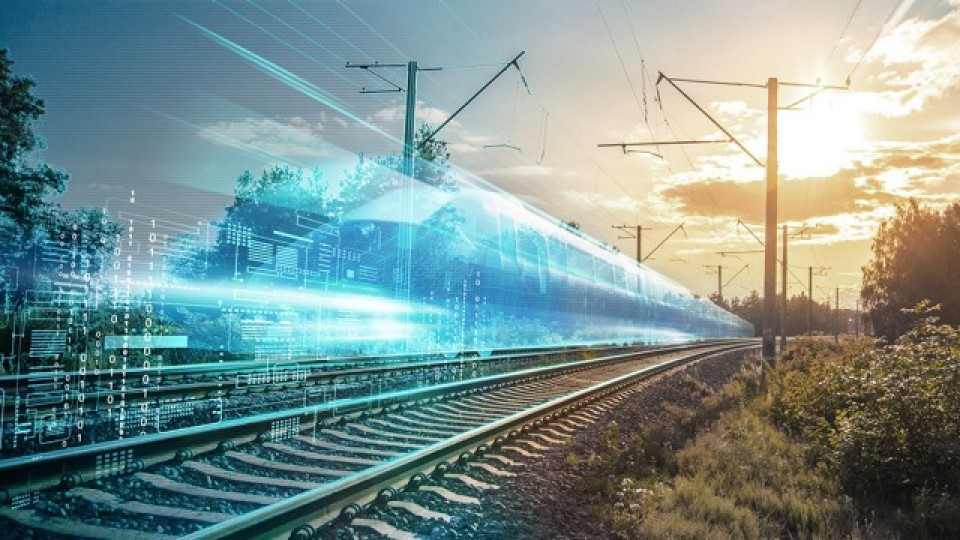
The digital transformation of rail: A revolution within the sector
Public transport has changed a great deal within the past ten years, with urban mobility undergoing a huge transformation. Digitalization and innovation have been behind many of the exciting changes to the ways in which we live and move. The digital evolution moves quickly, and with each new development within I.T., every step, every journey, puts us closer to the people-centric approach that the sector must remain focused on.
Digitalization is a major and evolving trend in global business and everyday life. It refers to the adoption or increase in use of digital and computer technology by either an organization, an industry, or a country. In other words, it represents the use of digital technologies to:
(i) improve processing efficiency
(ii) lower overall costs
(iii) enhance productivity (for example operation and maintenance)
(iv) establish new business models
(v) provide new revenue and value-adding opportunities
It is a gradual process of moving into the digital business mode [1].
Changing Technology Landscape
Technology is constantly accelerating, and what is clear is that public transport has massively benefited from new digital developments. New and emerging technologies have also started to impact the public transport sector. At UITP, we often say that it’s the people who make public transport, and as the changes are led by people, we must stay ahead of the trends to ensure we harness the potential of digitalization to better serve the needs of passengers.
The adoption of technology has accelerated with smartphones and will skyrocket with 5G network. Passengers are looking for seamless travel and real-time information. Coupled with advancing technologies (such as interconnected sensors and diagnosis tools, big data analytics, the Internet of Things (IoT), machine learning, and artificial intelligence (AI)), the public transport industry can carry out intelligent and rapid interpretation of data into useful information. This will lead to a radical transformation of business activities (planning, operation, and maintenance) in terms of delivery of increased asset availability and cost-effectiveness.
Digital Rail
The rail sector is witnessing a rapid adoption of technologies. In the last two decades, transit companies around the world are implementing new technologies to make passengers’ journeys more comfortable. Metro and other major public transport systems have progressed from simple mass transportation services to integrated public transport providers. Other than transporting passengers between origins to destinations, these public transport systems would continue to embrace evolving digitalization for the provision of services such as security, customer service assistance, and operational support.
There is an increasing demand for real information. Further, mobility data is becoming more personalized, identifiable, and predictable. This has enabled the layer of new technologies, supported by automated and artificial-intelligence-powered solutions. This has led to the evolution of:
|
Smart station |

Smart mobility |
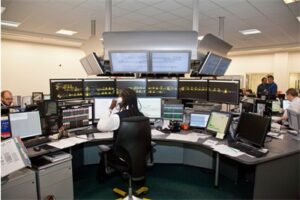
Smart operation |
Smart maintenance |
This paper discusses 5 major trends in Digitalisation (DX) of the rail transport industry:
- DX in rail operation
- DX in asset maintenance
- DX in infrastructure maintenance
- DX in control and signaling systems
- DX in customer experience
The details of key major trends and some examples are covered below:
Digitalization in rail operation
Digitalization in rail operations can improve the efficiency and productivity of station staff, drivers, middle management, and operations staff. Digitalization of rail operations can also provide real-time information to operations staff, including rotating scroll warnings, centralized traffic control, track map, and more.
Metro de Madrid has started to digitalize the company’s operations. The operator has developed a macro-project with a broad and inter-departmental scope. It is coordinated by the Lines Operational Management and takes into account both customer perspectives and internal visions by its employees. The project is still fully operational at different phases since 2018, covering the following areas:
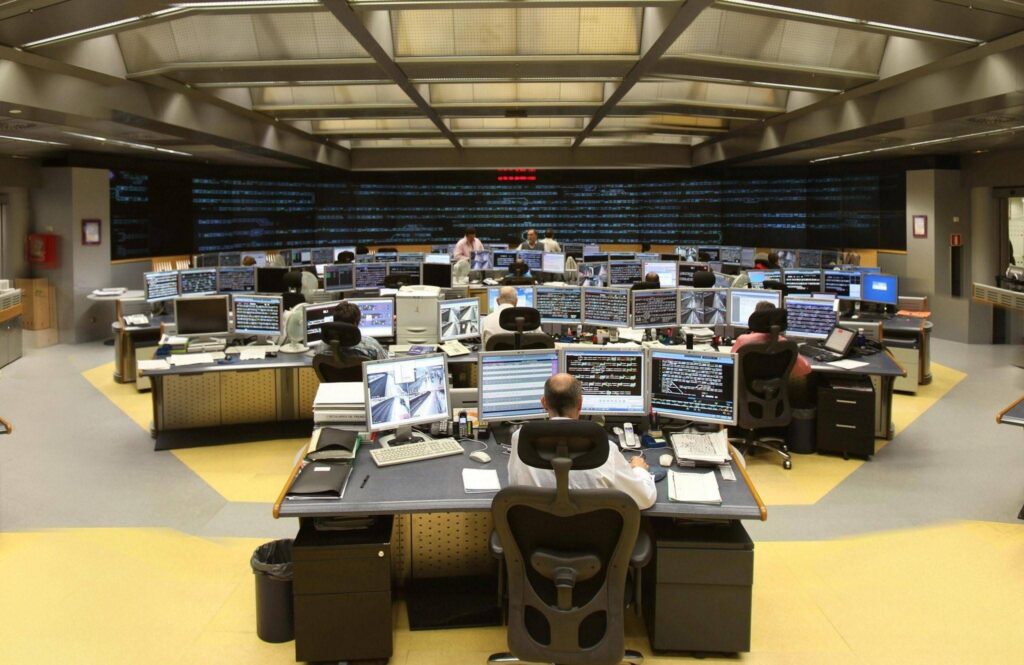
- Tablets for station staff
- Digital process of checking station installations
- Tablets for traffic staff (located at the headways)
- Digital head-end information displays
- Digital time recording of operational staff
- Digital repository of operational documentation
The macro-project for the Digitalisation of Metro de Madrid’s operations has contributed directly to the benefits of both internal and external customers [2].
External customers:
- Reduction of paper consumption and environmental impacts
- Improvement of management processes, such as locating and monitoring incidents in the facilities
- Provision of real-time information on routes, such as breakdowns, events, points of interest, and interchanges with other forms of transport along the metro lines
- Improvements in customer communication
Internal customers:
- Improvements in responsiveness and reliability of internal procedures and consultations
- Better integration of information from different systems and more efficient ways to carry out tasks
- Availability of various internal communication channels
- Easily accessible and up-to-date information and documentation are available
- Reduction of psycho-social risks in the workplace
- Reduction of errors associated with manual data processing
Digitalization in asset maintenance
In addition to system design, acquisition, operation, and decommissioning, effective maintenance is a key component of the overall asset management strategies and guidelines. The impact of digitalization is a game-changer on all asset maintenance activities in the rail transport sector. Ultimately the full deployment of digitalization for the maintenance of assets would pave the way to a fool-proof system [3].
Through the engagement of appropriate digital transformation strategies, public transport operators can achieve certain cost reductions, service quality enhancement, improved reliability, and the most optimal use of their physical assets.
Smarter asset management is deemed possible with maintenance systems that can learn and diagnose existing problems as well as predict future possible failures based on past data and analytics. They should also be able to formulate corresponding maintenance remedies.
Condition-based maintenance strategies and problem prediction guidelines are crucial and necessary instruments in optimizing (i) effective asset management decisions, (ii) timely identification of future possible failures, (iii) increase in asset availability, and (iv) improvement of maintainability. To achieve the above objectives, there are 4 major requirements:
- Accurate identification of maintenance failures
- Accurate calibration of sensors
- Accurate assessments of causes and trends of failures
- Formulation of effective mitigation measures and preventive strategies
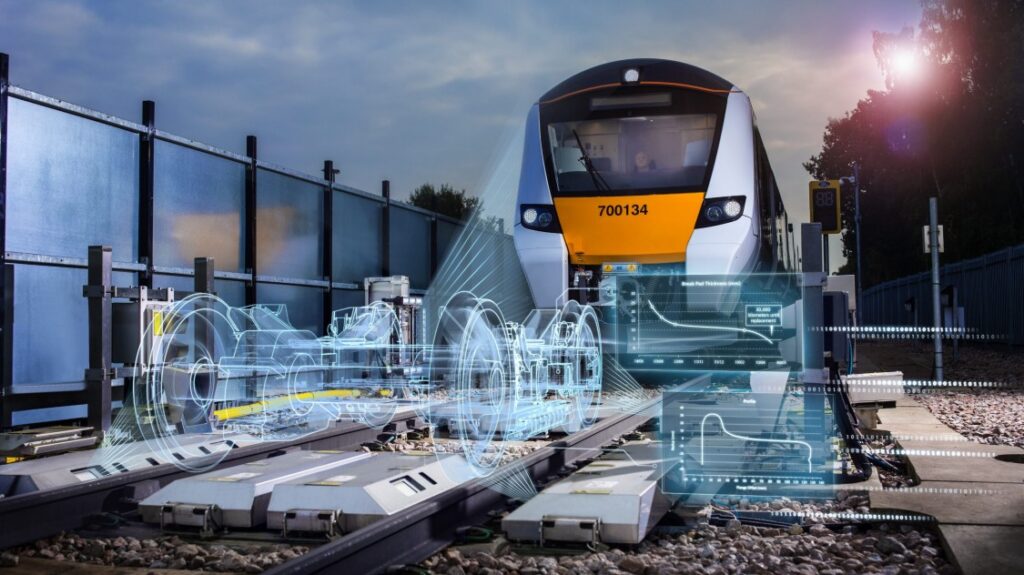
Partnering with ST Engineering Electronics, Siemens has developed and implemented a digital asset management solution – the Rail Enterprise Asset Management System (REAMS) [4]. It is adequately equipped with data analytics capabilities and expertise. REAMS was introduced to the Downtown Line (92 trains, 34 stations) in Singapore. Other Metro lines in Singapore are also considering joining the program in the future.
Automatic monitoring systems for rolling stock conditions
Smart monitoring and surveillance systems are changing the way public transport operators would manage various hazards, intrusions, railway crossings, and driver behaviors. As a result of continuous improvements in safety, performance, and reliability, an increased number of monitoring and surveillance systems have been planned and installed by the public transport sector.
For many metro operators, the captured digital data is either stored on local servers or integrated into the main company’s information technology (IT) system. Many metro companies have their rolling stock condition monitoring software customized to suit their particular requirements.
In a study conducted by the UITP Rolling Stock Subcommittee [5], the results indicated that most metro operators carry out maintenance of their equipment by themselves instead of using the Original Engineering Manufacturers (OEMs)/Suppliers. Although they find the monitoring systems quite reliable, they still prefer to revert to manual checks when the systems are not functioning properly. A greater level of confidence in the technology and its reliability is required before the operators would fully adapt to them.
The main benefits and disbenefits of engaging the rolling stock condition monitoring systems are:
- Maintenance: optimization, automation, labor reduction, and crisis prediction.
- Service Availability: minimizing service failures, reducing incidents and downtime.
- Quality Information: better understanding of rolling stock conditions, investigation data, prediction of problem indicators.
Disbenefits and preliminary mitigation suggestions
- Suppliers: The Metro operators are usually suffering from the lack of OEM support, rather complicated validation, and maintenance training. Before the final decision is to be made on the installation of an automatic monitoring system, it would be highly desirable to consult all stakeholders so that they would fully understand the requirements and possible constraints. It is also imperative to purchase only from companies with proven track records.
- Equipment: Sometimes the monitoring systems are difficult to be integrated into the main IT system. They may also have constraints in operating conditions and require highly skilled personnel for servicing and maintenance. It is also recommended that the system hardware and software are able to be customized. The procurement contract should clearly state the system requirements regarding system availability, measurement accuracy, conditions of use, and maintenance obligations.
- Service Quality: Some systems were proven to be unreliable such as incorrect detection. It will take time to increase public transport companies’ confidence in their reliability. It may be advantageous to integrate the monitoring system with the main IT system so that the best detection and data access location could be identified. Data management issues (such as size, usage, security, and access) and special skills for data transformation are also important considerations.
Digitisation in infrastructure maintenance
In rail infrastructure maintenance, the applications of the IoT, sensors, and devices are opening up new horizons for (i) problem/damage detection, (ii) preventive maintenance, and (iii) coordination with other systems, Government agencies, logistics providers, and transport modes.
In the recent past, a number of digitization applications have been initiated jointly by public transport operators and state-of-the-art system providers to improve system security, maintenance costs reduction, optimization of asset availability, problem detection, and mitigative strategies.
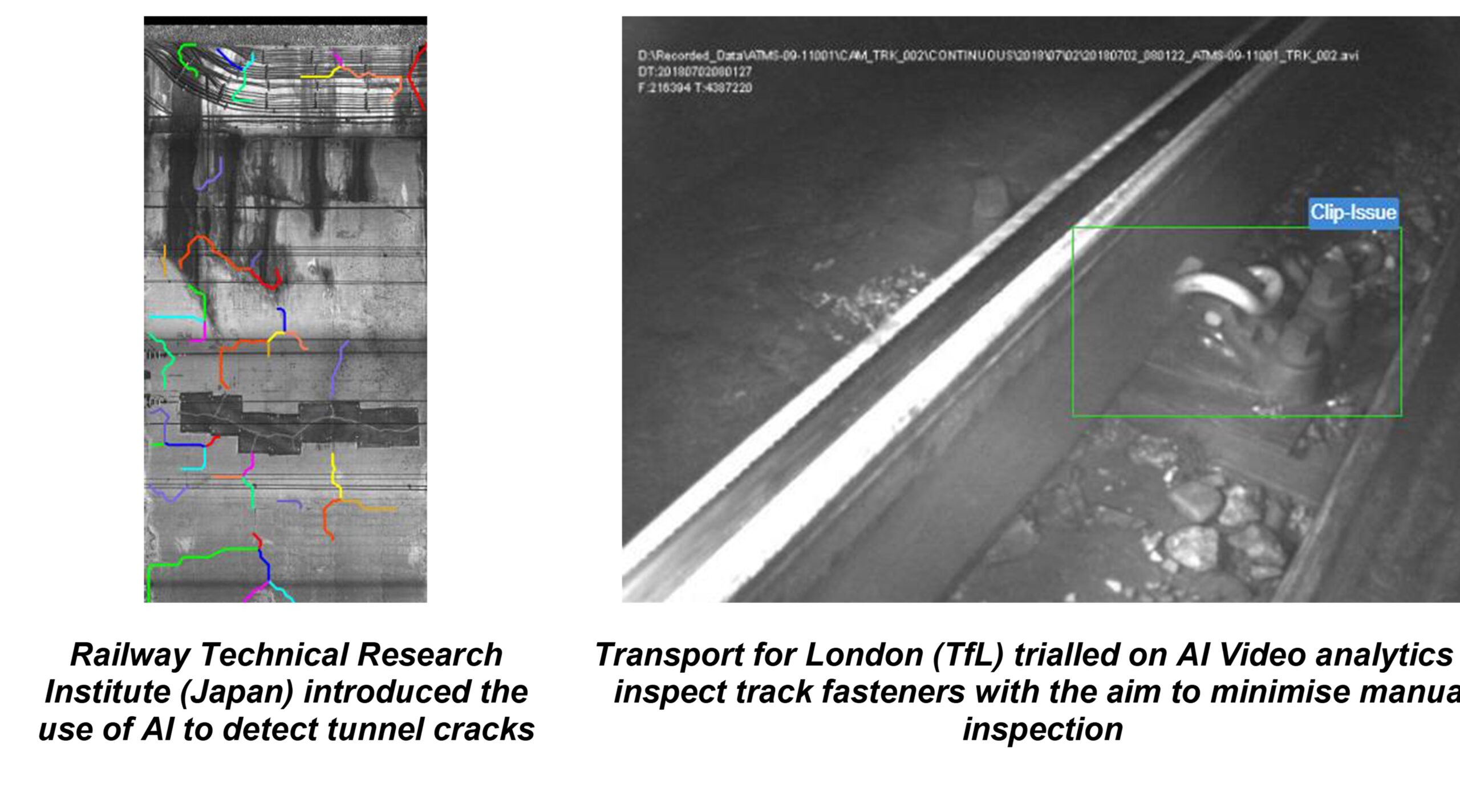
The following summarises some relevant applications:
In some countries, metro operators have started to use passenger trains to collect device information along railway tracks for further evaluation at maintenance centers. This improves not only the frequency and efficiency of equipment inspection but also reduces the maintenance and repair costs at nighttime.
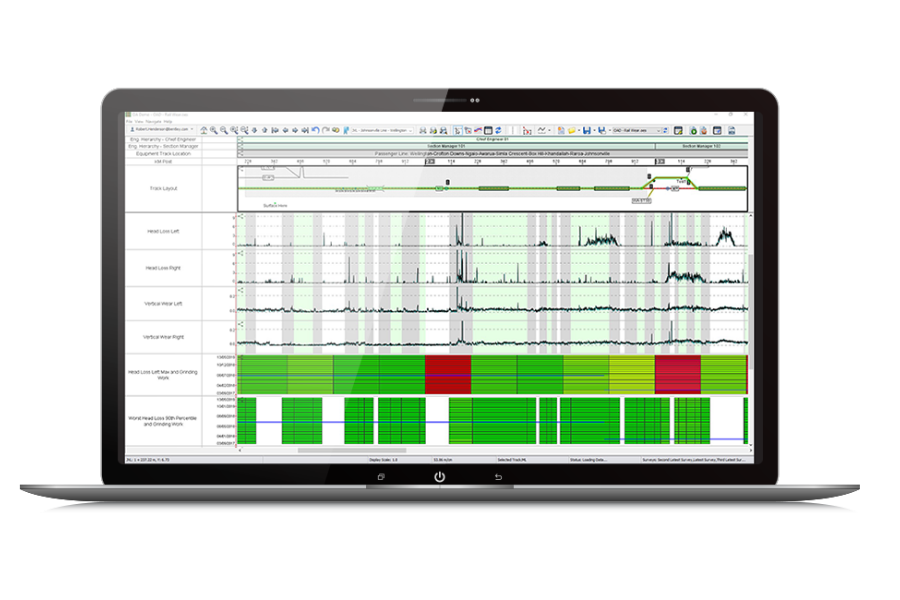
In the past, the Singapore Mass Rapid Transit (SMRT) operator relied on a time-consuming, laborious, and data-intensive framework to plan and implement corrective maintenance works to attain acceptable track conditions. They are now working with Bentley Systems on a highly automated Predictive Decision Support System (PDSS) to enhance efficiency in planning maintenance activities such as track renewals. The PDSS provides the maintenance teams with advanced data processing and visualization capability to support optimal decision making, including:
- Identification of areas where frequent corrective maintenance measures are to be carried out.
- Prioritization of maintenance tasks.
- Quantitative assessment of asset health.
- Analysis of asset health data to identify precursors of future problems.
PDSS also enables proactive maintenance. Planning tasks that used to take hours each day (such as data gathering, site surveying and task prioritisation) have been fully automated. The risk of human errors is greatly minimised. As a result, SMRT is now able to focus more on critical track defects and potential degradation of track conditions. The PDSS also provides full and unrestricted access to the data. With PDSS to support condition-based rail replacement programs, the total length of rail requiring replacement each year is expected to decrease.
The use of intelligent recognition technology at metro stations has become increasingly common not only in the ticketing systems, but also for improving security and maintenance. In terms of train maintenance at stations, some metro companies in Asia have installed fixed image detectors in repair centres and use robots to quickly scan train components before implementing manual repairs [6].
Digitalization in control and signaling systems
Digitalized control and signaling systems can radically enhance the reliability and performance of rail operations. From an infrastructure asset management standpoint, they would also eliminate outdated railway signal boxes and heavy copper wires. The following are a couple of examples of digitalization in control and signaling systems:
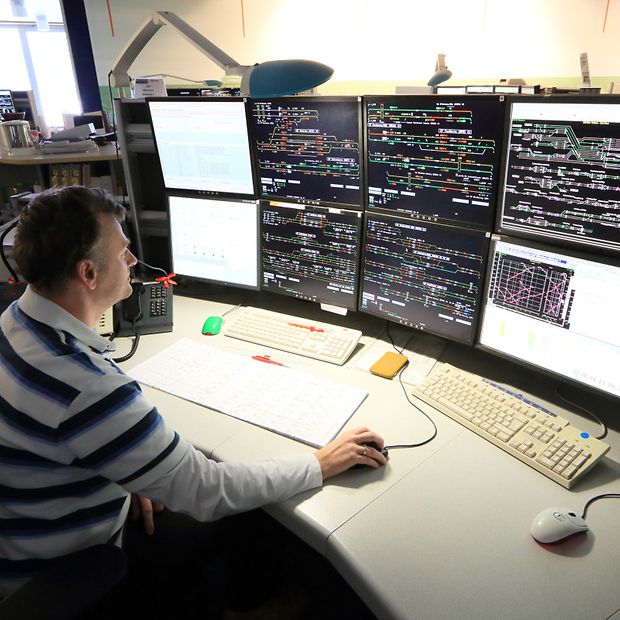
DB Netz is a major subsidiary of Deutsche Bahn that owns and operates a majority of the German railway system. It digitalized its train control systems for the future in a research program, namely “digital control command and signaling technology”.
Shift2Rail is a European technology, research, and development collaboration program funded jointly by its members and Horizon 2020. Shift2Rail projects have examined the potential of digital applications on various subsystems, such as “X2Rail” for control command and signaling, “Pivot” for rolling stock, “In2Track” for infrastructure, and “In2Stempo” for energy. Research and Innovation (R&I) activities, carried out within Shift2Rail, have contributed to a more efficient way to predict and control the present and future performance of rail assets.
Digitalization in Customer Experience
Customer experience is becoming a key topic for the rail transport operator. Passengers are demanding better service offerings and real-time information. Passengers’ expectations are moving faster and increasing competition from new mobility players, rail companies require to adopt new technologies and offering digital experiences to stay relevant. Rail needs to place the passenger front and center of the experience. Technology can help to improve the customer experience and loyalty among the passengers.
One of the recent examples includes the implementation of a passenger flow system during the COVID period to manage the crowding level at a railway station. The following diagram shows that how Passenger Flow Analysis using IoT sensors & AI in Vehicles and Stations [7] works using different technologies:
(1) Real-time people flow estimation achieved by image processing
(2) Motion of image is converted to people flow and congestion rate
(3) Count of number of passengers getting on and off in the vehicle
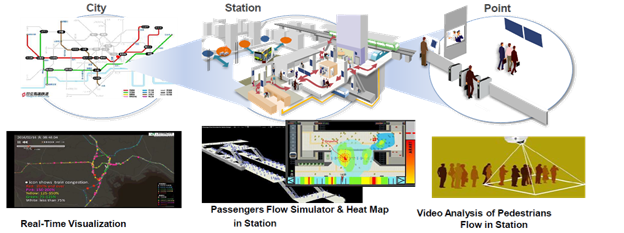
Digital communications with passengers using AI applications
AI is critical in identifying and connecting patterns from the data generated by advanced technologies. The popularity of AI has increased significantly in Customer Support Centres at rail stations. The most common AI applications in rail transport are:
- Customer Analytics
- Real-time Operations Management
- Intelligent Ticketing System
- Predictive Maintenance
- Scheduling & Timetabling
- Multi-modal Journey Planner
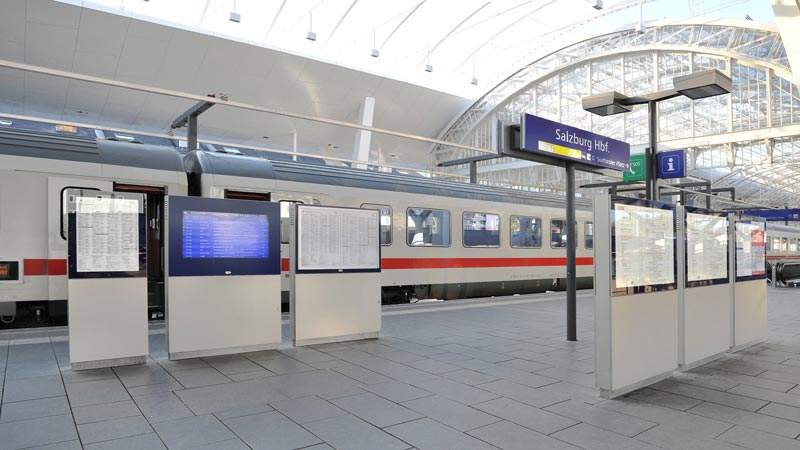
European experience
In the last seven to eight years, European railways have made the most significant improvements in formulating transparent communications with the passengers at stations and stops. These services include (i) more informative and user-friendly websites, (ii) real-time information about vehicles in motion, (iii) ticket purchase, (iv) onboard infotainment services, and (v) dynamic passenger and timetable information.
Several rail operators have made internet multi-media portals available to on-board passengers. In Austria, the Austrian Federal Railways (ÖBB) uses the catchy slogan to attract passengers to its rail services. In Germany, rail passengers can access the internet at over 135 stations, in Deutsche Bahn (DB) Lounges and on-board Inter-city Express (ICE) trains.
The use of robots as customer service executives is increasing around the world. As this helps to solve many challenges including staff requirements, language issues, and real-time customer analytics.
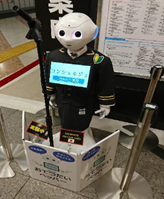
Japan experience
East Japan Railway Company has developed and deployed the JR East Communication Robot in Tokyo using the Natural Language Processing (NLP) and Pattern Recognition technologies. The multi-lingual humanoid robot is able to provide answers related to public transport systems, nearby facilities, and sightseeing activities. Its data input consists of 216 frequently asked questions (FAQs) and answers, based on interviews with travel and commercial “customer service” staff. This communication robot can reduce the number of queries faced by “customer service” staff at stations.
JR East’s Travel Service Center in Sendai and Nigata are also currently equipped with Natural Language Processing (NLP) & Pattern Recognition systems. It is a workflow support system providing relevant information to “customer service” agents in real-time at call-centres. Agents are able to shorten their response time and even inexperienced staff could handily address most queries from customers.
Challenges during the transition period of digital transformation
Some of the challenges [8] to be faced due to digitalization are:
- Technical: Transmission and communication bandwidth, data accuracy, cyber security, inconsistent standards, and obsolescence.
- Commercial: Fragmentation of supply chain, data governance, and management, warranty, proprietary software.
- Economic / business case: High initial investment and maintenance costs.
- Organization and HR: Impacts on management and company culture, the requirement of IT maintenance skills.
- Law and regulations: Resistance from safety authorities/PTOs/insurance companies, hindrance from complex tendering requirements on technological development.
Conclusion
The emergence of the internet and digital technologies is reshaping the industrial horizon, leading innovation trends, and profoundly affecting all aspects of urban rail transit.
Digital development provides a unique opportunity for rail operations to become an integral part of the transition toward a greener and more sustainable public transport mode. Digitalization of the rail sector can improve the performance, competitiveness, safety, and security of the railway systems. Digital solutions also increase the efficiency and cost-effectiveness of rail operations. Most rail operators know how to use the power of digital technologies to attain cost savings, service improvements, smarter infrastructure, and a greater passenger experience. It is important that they should seriously consider the concerns over privacy, security to regulation, ownership of data and proprietary systems, public acceptability, impacts on employment, and investing in stranded assets.
Reference:
[1] UITP Report of Digitalization and Public Transport
[2] Digitization of the Operation –Community of Madrid (Spain), UITP Rail Success Stories Report, 2021
[3] Digitalization in Public Transport: Implementing Predictive Asset Maintenance, March 2020, Knowledge Brief prepared by the Rail unit of the UITP secretariat
[4] white paper about digital asset management for rail systems
[5] Automatic condition monitoring systems for rolling stock, June 2020, UITP Rolling Stock Subcommittee
[6] FISC 53 – Infrastructure Maintenance –Systems for collected and processing data for the definition of maintenance methodologies, October 1, 2017
[7] S4M: The Future of Mobility and the role of Digitalisation, Hitachi (2021)
[8] 5 Digitalisation in Public Transport: Implementing Predictive Asset Maintenance, March 2020, Knowledge Brief prepared by the Rail unit of the UITP secretariat
(The article was originally published in Metro Magazine in China. Co-author by Sue Chan, Head of UITP Asia Office)
Sorry, the comment form is closed at this time.



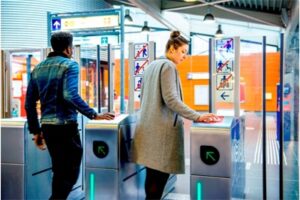
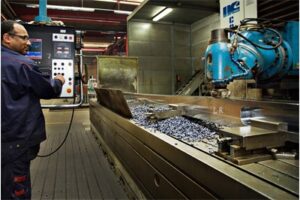
Pingback: How companies are leveraging Innovation to enhance public transport? | Wellington Toapanta (#019) - Mobility Innovators
Chana
Thanks for ones marvelous posting! I seriously enjoyed reading it,
you’re a great author. I will make certain to bookmark your blog and
will eventually come back someday. I want to encourage you to ultimately continue your great job, have a nice morning!